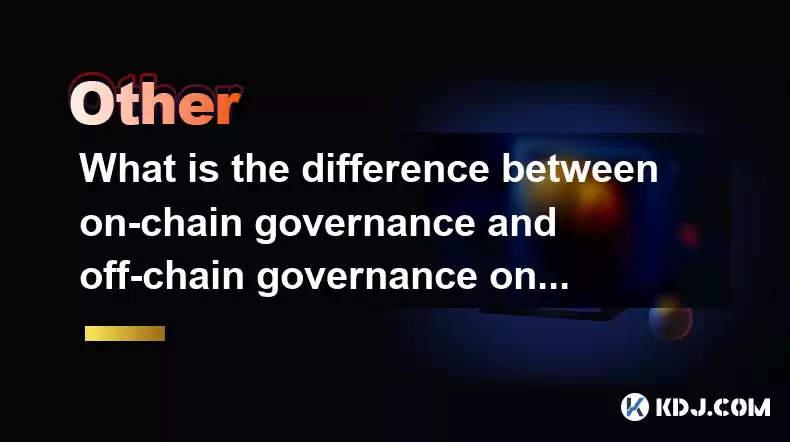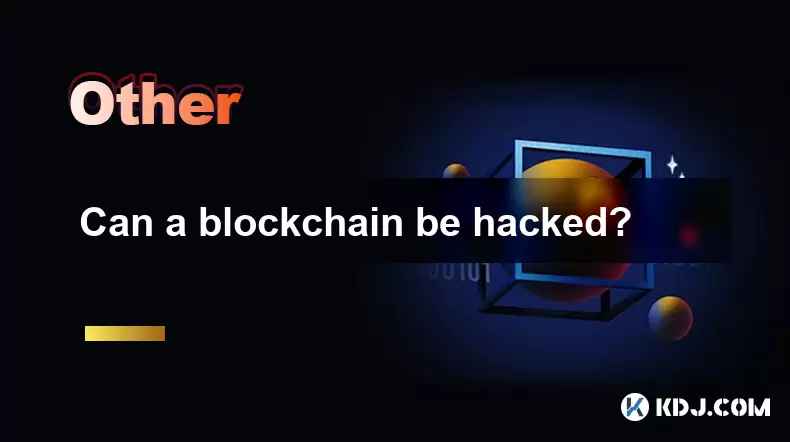-
 Bitcoin
Bitcoin $115000
0.12% -
 Ethereum
Ethereum $3701
4.50% -
 XRP
XRP $3.081
2.99% -
 Tether USDt
Tether USDt $0.0000
-0.01% -
 BNB
BNB $767.9
1.45% -
 Solana
Solana $169.5
3.13% -
 USDC
USDC $0.9999
0.01% -
 Dogecoin
Dogecoin $0.2106
4.30% -
 TRON
TRON $0.3334
1.62% -
 Cardano
Cardano $0.7564
2.54% -
 Stellar
Stellar $0.4165
0.76% -
 Hyperliquid
Hyperliquid $38.75
0.25% -
 Sui
Sui $3.593
3.00% -
 Chainlink
Chainlink $17.08
3.59% -
 Bitcoin Cash
Bitcoin Cash $573.6
4.35% -
 Hedera
Hedera $0.2508
-0.84% -
 Avalanche
Avalanche $23.07
6.46% -
 Ethena USDe
Ethena USDe $1.001
-0.02% -
 Litecoin
Litecoin $120.8
8.17% -
 UNUS SED LEO
UNUS SED LEO $8.943
-0.32% -
 Toncoin
Toncoin $3.400
-5.60% -
 Shiba Inu
Shiba Inu $0.00001255
1.54% -
 Uniswap
Uniswap $9.908
6.32% -
 Polkadot
Polkadot $3.718
2.10% -
 Monero
Monero $303.0
-0.74% -
 Dai
Dai $0.9999
-0.02% -
 Bitget Token
Bitget Token $4.392
0.91% -
 Cronos
Cronos $0.1403
6.31% -
 Pepe
Pepe $0.00001076
1.13% -
 Aave
Aave $267.2
1.80%
What is the difference between on-chain governance and off-chain governance on blockchain?
On-chain blockchain governance uses the blockchain for transparent, immutable voting, while off-chain methods, though potentially faster, sacrifice transparency and immutability, increasing security risks.
Mar 19, 2025 at 07:31 am

Key Points:
- On-chain governance utilizes the blockchain itself for voting and decision-making, offering transparency and immutability. Decisions are directly encoded on the blockchain and are verifiable by anyone.
- Off-chain governance relies on external platforms or mechanisms for voting and decision-making. This can improve efficiency but sacrifices some transparency and immutability.
- Both methods have advantages and disadvantages, making the optimal choice dependent on the specific needs and priorities of a blockchain project.
- Security considerations differ significantly between the two approaches, with on-chain governance inheriting the security of the blockchain itself.
What is the difference between on-chain governance and off-chain governance on blockchain?
Blockchain governance dictates how changes and updates are made to a blockchain's protocol. Two primary methods exist: on-chain and off-chain governance. Understanding their differences is crucial for assessing the decentralization and security of a cryptocurrency project.
On-chain governance directly integrates the voting and decision-making process into the blockchain itself. Proposals are submitted, and token holders vote directly on the blockchain. The results are permanently recorded, ensuring transparency and immutability. This means that all votes and the final outcome are publicly auditable and verifiable on the blockchain’s explorer. This is considered a more decentralized approach.
Off-chain governance, conversely, uses external platforms or mechanisms for voting and decision-making. This could involve dedicated websites, forums, or even centralized voting platforms. While potentially more efficient in terms of speed and cost, off-chain governance compromises on transparency and immutability. The results aren't inherently verifiable on the blockchain itself, raising potential concerns about manipulation or censorship.
On-Chain Governance: A Deeper Dive
On-chain governance leverages smart contracts to automate the voting process. Token holders, usually those with a significant stake in the project, are granted voting rights proportional to their holdings. Proposals undergo a voting period, and the outcome is automatically implemented if the required quorum and voting threshold are met. This ensures that decisions are directly encoded into the blockchain's code and are resistant to modification.
The process typically involves several steps:
- Proposal Submission: Anyone can submit a proposal outlining changes to the protocol.
- Voting Period: Token holders cast their votes, often weighted by their token holdings.
- Outcome Determination: The smart contract automatically tallies the votes and implements the winning proposal if it surpasses the predetermined thresholds.
- Execution: The approved changes are integrated into the blockchain's code, usually via a hard fork or soft fork.
The level of decentralization in on-chain governance depends on the token distribution. A highly concentrated token distribution could lead to a scenario where a small group of individuals hold disproportionate power, potentially hindering decentralization.
Off-Chain Governance: A Detailed Look
Off-chain governance systems vary greatly. Some projects utilize dedicated forums or websites where community members can discuss and vote on proposals. Others might rely on a centralized governance committee or a delegated voting system. While faster and potentially cheaper than on-chain solutions, off-chain governance systems are vulnerable to manipulation and censorship.
The process generally follows these steps:
- Proposal Submission: Proposals are submitted through designated channels.
- Discussion and Voting: Community members discuss and vote on proposals, typically using an external platform.
- Outcome Determination: The outcome is determined based on the voting results. This often involves a human element, introducing potential for bias.
- Implementation: The changes are implemented by developers or a designated team, potentially introducing a single point of failure.
The lack of immutability and transparency is a key drawback. The absence of a permanent, verifiable record on the blockchain itself opens doors to potential manipulation or disputes over the legitimacy of the voting process.
Security Implications
On-chain governance inherits the security of the underlying blockchain. The immutability of the blockchain itself protects the governance process from tampering. Off-chain governance, on the other hand, relies on the security of the external platform or mechanism used for voting. This platform becomes a potential vulnerability. Compromising this external system could lead to manipulated results or complete control over the governance process.
Hybrid Approaches
Many projects adopt hybrid approaches, combining aspects of both on-chain and off-chain governance. This allows them to leverage the advantages of both methods while mitigating their respective drawbacks. For example, a project might use an off-chain forum for initial discussions and proposal refinement, followed by on-chain voting for final decision-making.
Frequently Asked Questions:
Q: Is on-chain governance always better than off-chain governance?
A: Not necessarily. On-chain governance offers superior transparency and immutability but can be slower and more complex to implement. Off-chain governance can be more efficient but sacrifices decentralization and security. The best choice depends on the project's specific needs and priorities.
Q: What are the risks associated with off-chain governance?
A: The primary risks are manipulation, censorship, and lack of transparency. Since the voting process isn't directly on the blockchain, there's a higher risk of the results being altered or the process being controlled by a small group.
Q: How does token distribution affect on-chain governance?
A: A highly concentrated token distribution can lead to a small group of holders having disproportionate influence, potentially undermining decentralization. A more evenly distributed token supply generally leads to more democratic governance.
Q: Can off-chain governance be secure?
A: While inherently less secure than on-chain governance, off-chain systems can incorporate security measures to mitigate risks. However, they will never achieve the same level of immutability and transparency offered by on-chain systems.
Disclaimer:info@kdj.com
The information provided is not trading advice. kdj.com does not assume any responsibility for any investments made based on the information provided in this article. Cryptocurrencies are highly volatile and it is highly recommended that you invest with caution after thorough research!
If you believe that the content used on this website infringes your copyright, please contact us immediately (info@kdj.com) and we will delete it promptly.
- Velo Universe, DEX, and DeFi Security: Navigating the Future of Decentralized Trading
- 2025-08-05 09:25:13
- Bitget Wallet Revolutionizes Solana with Gas-Free Transactions: A New Era for DeFi
- 2025-08-05 09:25:13
- Ozak AI, Crypto Boom, and ROI Potential: Is This the Next Big Thing?
- 2025-08-05 09:25:24
- Solana's ETF Hopes & the All-Time High Chase: Is SOL Set to Soar?
- 2025-08-05 09:25:24
- Coinbase's Brian Armstrong and the Art of Focused Work: A Deep Dive
- 2025-08-05 09:25:30
- Uniswap Price Prediction: Bullish Reversal on the Horizon?
- 2025-08-05 09:25:30
Related knowledge

What is the purpose of a nonce in mining?
Aug 04,2025 at 05:56pm
Understanding the Role of a Nonce in Cryptocurrency MiningIn the world of cryptocurrency mining, the term nonce stands for 'number used only once.' Th...

Can data on a blockchain be deleted?
Aug 05,2025 at 04:00am
Understanding Blockchain ImmutabilityThe core principle behind most blockchain systems is immutability, which means that once data is recorded onto th...

What is the difference between on-chain and off-chain transactions?
Aug 02,2025 at 04:22pm
Understanding On-Chain TransactionsOn-chain transactions refer to digital asset transfers that are recorded directly on a blockchain ledger. These tra...

How are blocks linked together?
Aug 04,2025 at 06:56am
Understanding the Structure of a BlockchainA blockchain is a decentralized digital ledger composed of a sequence of blocks, each containing a list of ...

Can a blockchain be hacked?
Aug 05,2025 at 08:29am
Understanding Blockchain Architecture and Security PrinciplesBlockchain technology is built on a decentralized and distributed ledger system that reco...

What is a node's role in a blockchain network?
Aug 03,2025 at 03:16pm
Understanding the Function of a Node in a Blockchain NetworkA node is a fundamental component of any blockchain network, acting as a participant that ...

What is the purpose of a nonce in mining?
Aug 04,2025 at 05:56pm
Understanding the Role of a Nonce in Cryptocurrency MiningIn the world of cryptocurrency mining, the term nonce stands for 'number used only once.' Th...

Can data on a blockchain be deleted?
Aug 05,2025 at 04:00am
Understanding Blockchain ImmutabilityThe core principle behind most blockchain systems is immutability, which means that once data is recorded onto th...

What is the difference between on-chain and off-chain transactions?
Aug 02,2025 at 04:22pm
Understanding On-Chain TransactionsOn-chain transactions refer to digital asset transfers that are recorded directly on a blockchain ledger. These tra...

How are blocks linked together?
Aug 04,2025 at 06:56am
Understanding the Structure of a BlockchainA blockchain is a decentralized digital ledger composed of a sequence of blocks, each containing a list of ...

Can a blockchain be hacked?
Aug 05,2025 at 08:29am
Understanding Blockchain Architecture and Security PrinciplesBlockchain technology is built on a decentralized and distributed ledger system that reco...

What is a node's role in a blockchain network?
Aug 03,2025 at 03:16pm
Understanding the Function of a Node in a Blockchain NetworkA node is a fundamental component of any blockchain network, acting as a participant that ...
See all articles

























































































